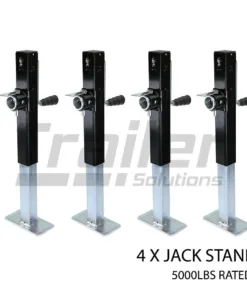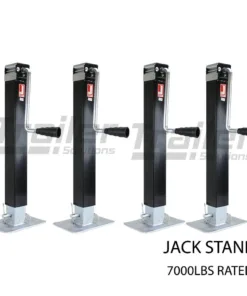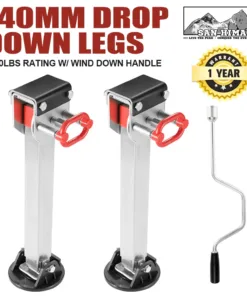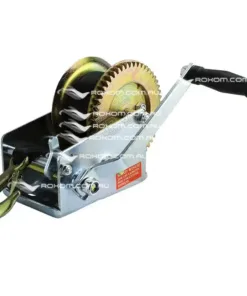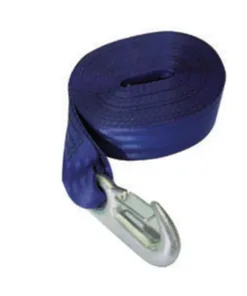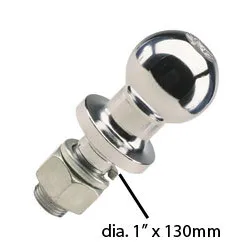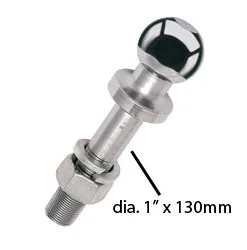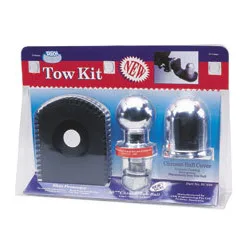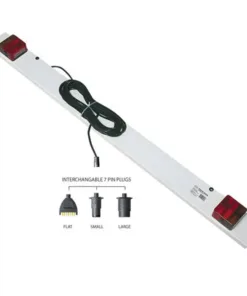Boat Trailer Tutorials
Tutorial: How To Launch A Trailer Boat Safely
How To Launch A Trailer Boat Safely
How do you launch your boat? Here’s a correct way to launch any boat that you can tow behind your vehicle on a boat trailer. This technique may have to be adapted to the type and style of the boat ramp and dock your launching at. For the purpose of this article, we’re going to imagine there’s at least one dock and a boat ramp.
Preparing your boat. Prepare as much of your boat as possible while it is still on the trailer, and while still on dry land. Prepare the boats engine, fuel, safety gear, fenders, etc. You should be ready to drive your boat off the trailer right after it’s backed down the ramp. Other people want to launch as well, theres no point holding people up and getting into an argument at the ramp. We are all here to enjoy our day and enjoy our boats. As a tip; It may be a good idea to have a written checklist before you launch.

Planning Your Launch: If your going to bring guests, brief them on where to go and what to do before you launch your boat. If your going to be bringing along children, forbid young children and pets from playing on the boat launch ramp as this is a roadway that transitions into a waterway and can be extremely dangerous! Keep children and pets supervised by an adult in a different area than at the boat launch ramp. NEVER let children or pets play or be unattended at a boat launch ramp, you do not want any issues or disasters before your day has even started.
Unplug the trailer towing light assembly before reversing your trailer into the water. Unplug the trailer towing light assembly from the vehicle’s electrical system before your reverse your vehicle into the water.
Put the drain plug in the boat. This is very important! You do not want your boat sinking at the boat ramp. Not only is this very embarrassing, it can cause alot of damage and money to your boat.
Undo the hold down straps connecting your boat to the trailer. Undo and store the hold down straps, but leave the winch hook connected to the bow. You don’t want your boat sliding off your trailer before it is in the water!
Have your dock lines and fenders ready to go for immediate use. You don’t want your boat slamming into the jetty causing potential damage to your boat. play it safe and protect your boat and everyone involved in launching your boat.
Revers your boat trailer down the ramp slowly. This is achieved easiest with two people: one driving and one guiding you down the ramp. With a 4WD or SUV it can be easier to see when reversing if you lower the tailgate or open the rear hatch/door or window. Drive slowly. How far to back the boat trailer into the water depends on numerous factors – what type of trailer you have, depth of the water, what type of boat you have, etc. A good rule of thumb is to back in until the water is just above the hubs of the trailer. Be cautious about backing in too far otherwise your vehicle might become stuck.
Ensure that your vehicle’s hand break is on before leaving your vehicle to attend your boat. Failure to do so may cause serious injury to any persons assisting and cause substantial damage to your vehicle, boat and trailer.
Lower the lower unit (for boats with outboard and inboard-outboard engines). be careful of shallow water, always check to see how much depth you have before lowering to ensure maximum safety and to prevent damage caused to your boat.
Turn on the bilge blower to remove any petrol fumes that may have accumulated in the bilge. this will ensure your boat starts correctly and does not have any issues when trying to start.
Ensure that no person is near the engine when starting and that no person or boat is in your path before you put the boat in reverse. this will prevent serious injury and will help get your boat started faster so you can start to enjoy your day out on your boat.
before you put the boat in reverse. this will prevent serious injury and will help get your boat started faster so you can start to enjoy your day out on your boat.
Pay attention to currents, wind and waves that can easily pull your boat off course and into a collision course with another boat or dock. Always check local weather reports so you are prepared for all conditions and any un planned circumstances that may occur. Even basic knowledge of how tides and currents flow can help to prevent any serious injury or danger.

Starting the engine. Make sure the engine is in the water, and turn it over. Once it’s running, undo the winch hook from the bow eye, and back the boat off your trailer. For smaller boats, you can just push the boat and assist it while holding a mooring line.

Secure the boat to the dock. Tie the mooring lines to cleats on the dock. Use fenders to prevent the hull from being damaged. If you have some assistance launching, have your partner hold the boat securely until you arrive back from parking your vehicle.

Slowly pull the vehicle out. Boat ramps can be slippery with moss and algae and it is important not to let your vehicles wheels spin. If your vehicle is equipped with four-wheel drive, this can be useful if you back tires start to spin or slip. Once the boat is afloat and secured to the dock, drive the vehicle back up the ramp and park in the designated parking area.

When pulling away from the dock, it is important to understand that unlike a car, the stern of the boat is pushed to one side or the other, whereas a car’s pivot point is in the front. Be careful not to turn the boats steering wheel in the opposite direction of the dock, with the boat a mere few inches from the dock, and just hit the throttle – or your engine’s outdrive will push your boat right into the dock, this can cause serious injury and substantial damage to your boat. Make sure you have pushed away several feet from the boat dock before driving away.
- ENJOY YOUR DAY BOATING! Be safe, and always obey local laws.
Tips and Tricks:
- Always make sure your boat trailer rollers, skids, bunks or bumper covers are in good working condition. You do not want to be struggling with your trailer when launching your boat. The easier it is to launch, the more time you will have enjoying your boat for the day.
- If you are struggling to launch your boat, please ask someone at the ramp who has experience launching their boat for some assistance and guidance. It is better to be safe than sorry when launching and retrieving your boat. You can only get better the more times you launch your boat.
- If launching for the first time and you have a smaller boat, try launching your boat at a time where no others are at the ramp. this will allow you to practice all steps and not interrupt others so when it comes time when you wish to spend the day on your boat, you have the experience and knowledge to do the task correctly.
Notes: A big thank you to Wikihow for the images used to describe this article best, and information on how to help launch your boat correctly to avoid injury and damage to your boat.
Products Related To This Article:


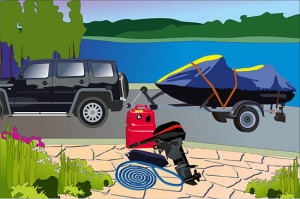



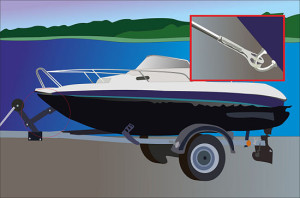






 before you put the boat in reverse
before you put the boat in reverse



